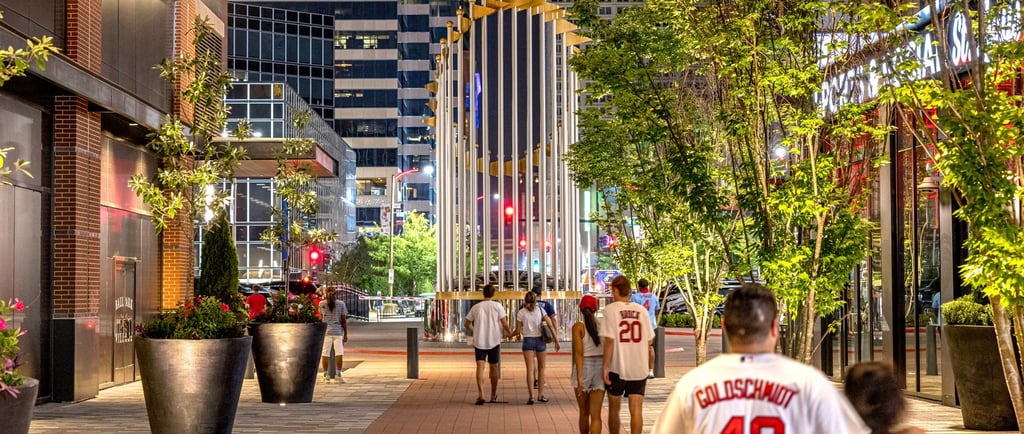The Impact of Sports on Urban Development
This article explores the growing role of sports in urban development. It talks about how new stadiums and big events can help improve infrastructure and create jobs. The piece uses examples like Tottenham Hotspur’s stadium and Barcelona’s Camp Nou to show how sports can boost local economies. It also touches on the risks, like empty stadiums after events, and explains how careful planning is needed to make sure these projects benefit the city in the long run.
Kyriakos Lykourgos
5/6/20253 min read


Sports have long been regarded as a source of entertainment, community engagement, and a way for people to stay active and healthy. However, clubs and major sporting events (e.g. the FIFA World Cup) can also be used from cities to drive long-term investment, reshaping the infrastructure and character of cities. In the U.S., successful sports franchises have played a significant role in transforming urban environments, becoming key players in the revitalisation of their cities. A lot of politicians who understand the value of sports investments, are often keen to support and protect these organisations. They recognise the positive impact sports investments can have on their cities, both economically and socially. European cities are now adopting similar approaches, using sports to create jobs, improve infrastructure (train stations, roads, etc.), attract tourism, and more. They also leverage sports clubs to promote a sense of identity and pride among residents. Major sports events, such as cup finals or significant matches in European competitions, are usually attended by mayors, presidents, and other politicians who want to associate their image with the success of the team.
Stadiums
Tottenham Hotspur in the United Kingdom is a leading example. The new team's stadium, which opened in 2019, was part of a broader redevelopment plan that cost around £1 billion. The vision behind it went far beyond just constructing a new stadium, it was about creating a multi-purpose destination. The stadium now hosts football matches, concerts, conferences, sporting events of other sports (e.g NFL games), and various other events. Surrounding the stadium, new businesses, including restaurants, hotels, bars, and shops, have opened, creating thousands of new jobs and boosting the local economy. Importantly, the project was primarily privately funded, meaning the local area benefited from the development with minimal investment from the public sector. This demonstrates a sustainable partnership model between the club and the city.
Similarly, in Spain, Barcelona is transforming the iconic Camp Nou and its surroundings into a modern sports and entertainment district. The project, which will cost around €1.45 billion, promises long-term benefits that are projected to far exceed the initial investment.
Events
Large-scale sporting events are often used as a catalyst for city improvements. Cities and countries spend significant amounts of money to upgrade infrastructure ahead of hosting major events. The idea is that the arrival of visitors will help cover the costs, while leaving behind new, modern infrastructure that locals and tourists will continue to enjoy long after the event. For instance, Paris 2024 Summer Olympics were used by the city to upgrade public transport, build new housing(6000 new housing units), and improve underserved areas in the city. Their plan was also to use pre-existing stadiums as much as possible to avoid excess spending and also take advantage of the Olympic Village, converting it to affordable housing after the Games().
Sport as a Long-Term Asset
Some cities view investing in sports infrastructure primarily as a way to gain visibility. However, when executed effectively, stadiums and major events can bring long-term economic growth. Such investments increase business activity and revitalise underused areas of a city, with these aspects being vital for long-term prosperity. Furthermore, these investments can lead to additional benefits, including upgraded facilities, the promotion of sports activities, the reforming of local culture, and the creation of new public spaces such as parks and training facilities.
Risks and Costs
While investments of this calibre can have considerable benefits, they can also have costs and risks. The opportunity cost of such investments is often substantial. Public or private funds spent on stadiums and sports infrastructure might otherwise have been used for more immediate needs, such as healthcare, housing, and education. A lot of mayors that sign agreements with sports franchises to subsidise their projects usually face a lot of negative reactions as well because citizens may not really believe in the public impact of the project, and they may prefer the money to be spent elsewhere.
Another major risk is the potential for creating "white elephants". This term is used to describe large venues that are underused and become financial burdens after the event. There are several examples of cities that hosted the Olympics or the World Cups that faced this challenge in the past. The stadiums also need maintenance, and it usually provides limited return; thus, they can be a financial burden if not used efficiently.
To mitigate these risks, cities are now aiming for multi-use, flexible venues that can be repurposed for different events or functions. An extreme example of this is the 2022 FIFA World Cup in Qatar, where some stadiums were built to be dismantled after the event, with parts of them even being relocated to other countries.
Conclusion
The key way to success in such investment is to look further than the matchday use of the facility. The cities should approach such investments as a way to redevelop modern, resilient neighbourhoods, and also as a way to create vibrant culture in the city for the residents to enjoy. These projects require big investments that are difficult to make reasonable; however, if done in the right way, they can change the city’s image and improve the overall quality of life of citizens.
